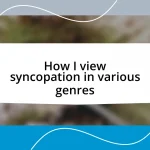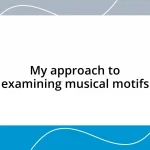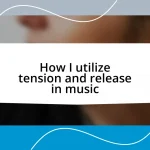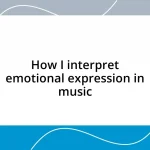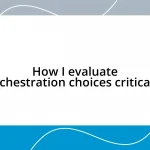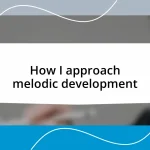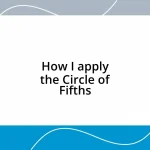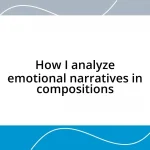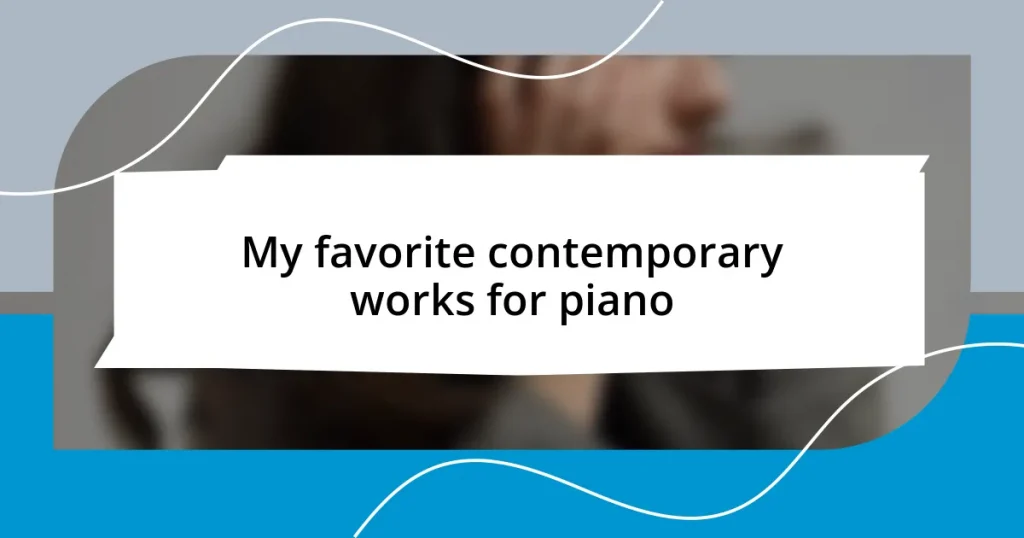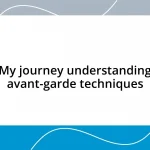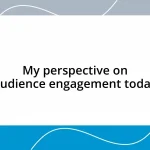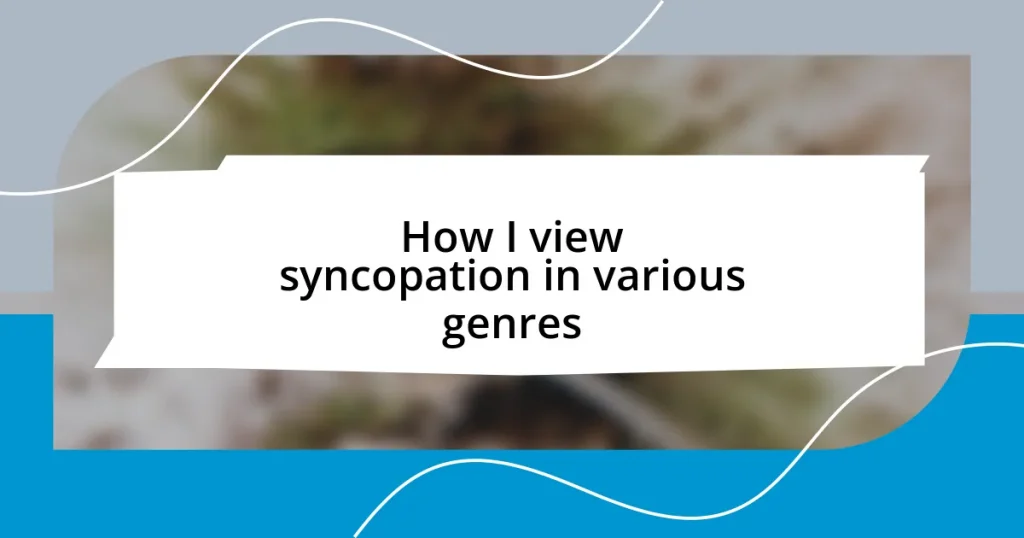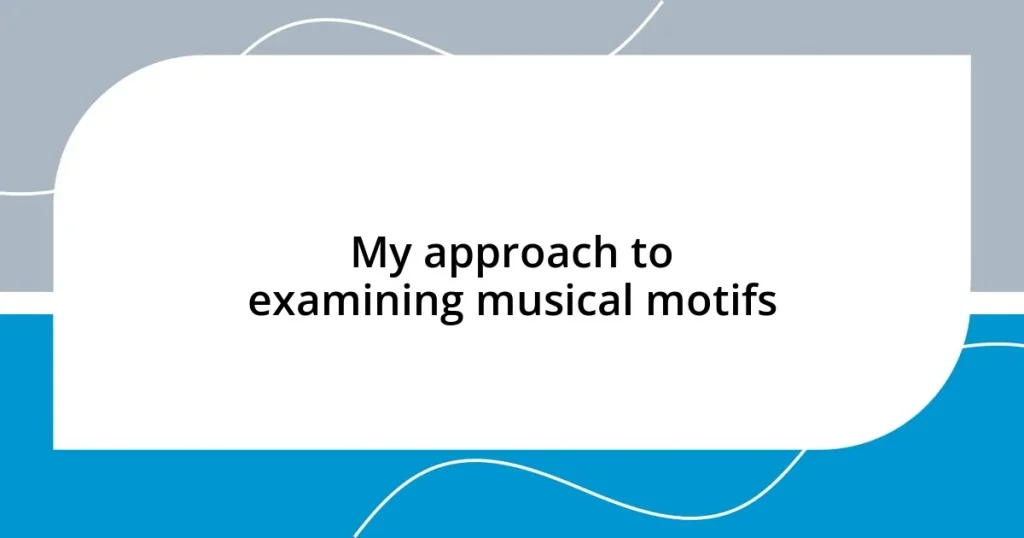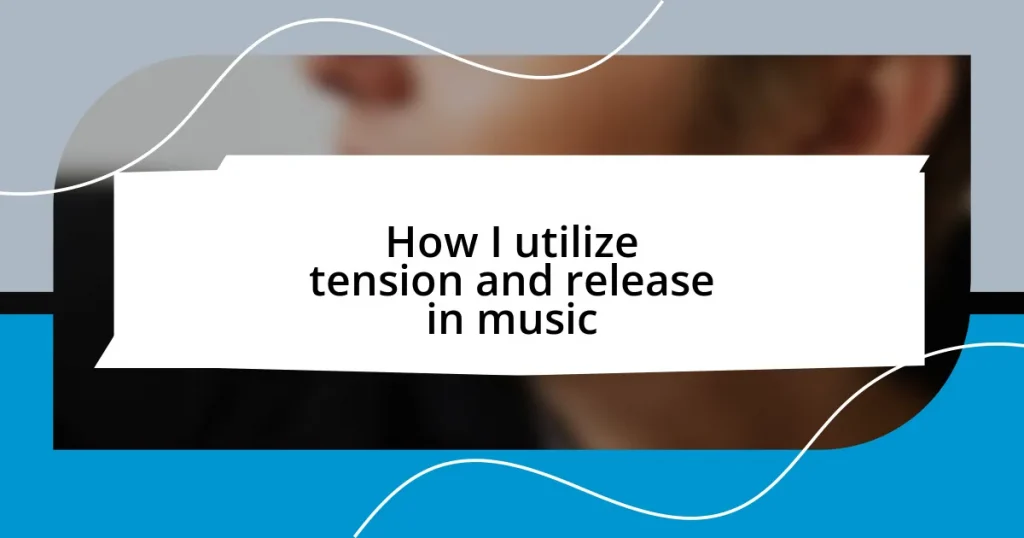Key takeaways:
- Contemporary piano works encourage unconventional techniques and emotional depth, resonating with personal experiences and inviting unique interpretations.
- Key characteristics include stylistic diversity, extended techniques, and emotional accessibility, creating rich and multifaceted compositions.
- Notable contemporary composers like Philip Glass, Ludovico Einaudi, and Caroline Shaw offer fresh sounds that inspire pianists to explore their creativity.
- Experimentation, active listening, and connecting emotionally with the music enhance contemporary piano performances, making them powerful and relatable experiences.
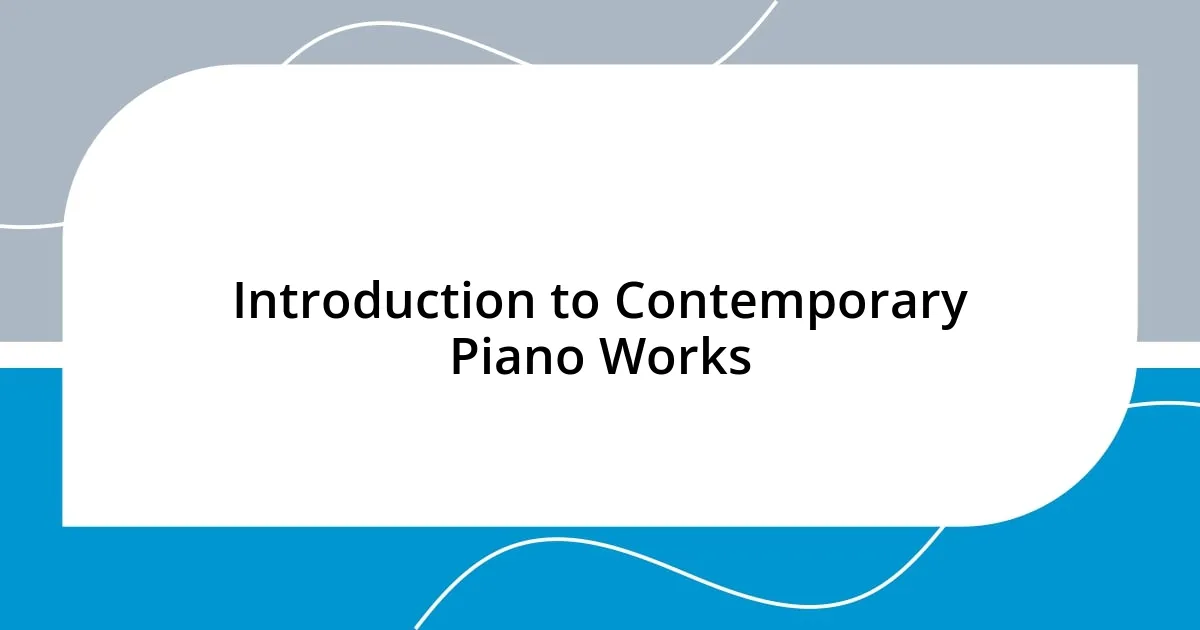
Introduction to Contemporary Piano Works
Contemporary piano works capture a vibrant blend of innovation and emotion, pushing the boundaries of traditional music. I remember the first time I encountered a piece from a living composer; it felt as if the keyboard was speaking directly to me in a language of its own. Have you ever experienced that rush when a familiar instrument suddenly sounds new and unexpected?
In these modern compositions, pianists are often encouraged to explore unconventional techniques and unique soundscapes. This freedom sparks creativity and invites both musicians and listeners to interpret music in deeply personal ways. I’ve found that every time I sit down to play a contemporary piece, there’s an exhilarating element of surprise that leaves me eager to discover what’s next.
The emotional depth of contemporary piano works often resonates with real-world experiences, adding layers of meaning that traditional pieces may lack. Just last week, I stumbled upon a stunning piece that mirrored my own feelings of nostalgia and hope. Isn’t it incredible how music can articulate our emotions in ways we sometimes struggle with?
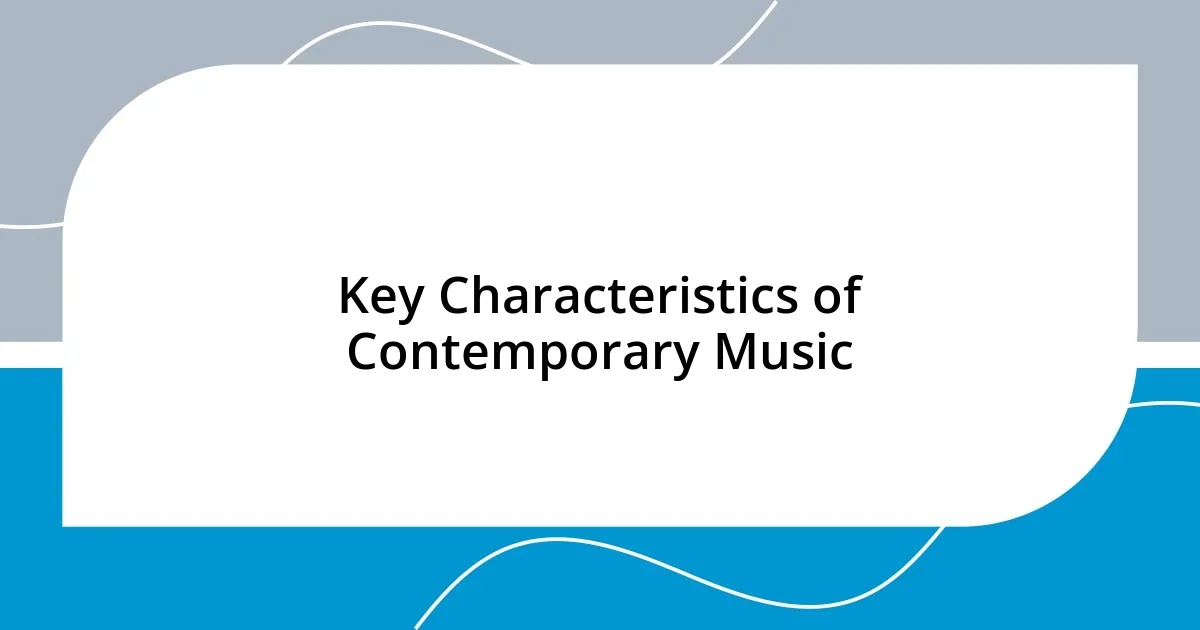
Key Characteristics of Contemporary Music
Contemporary music embraces a wide range of styles, often defying categorization. I’ve often found myself surprised by how a single composition can blend elements of jazz, classical, and even electronic music. When I first learned about polyrhythms—a technique where two or more contrasting rhythms are played simultaneously—I swiftly understood that this was a powerful tool for creating tension and excitement in a piece.
Another hallmark of contemporary works is their use of extended techniques. These methods stretch the boundaries of what a piano can do, driving the instrument into uncharted territory. I recall a mesmerizing performance where the pianist didn’t just play the keys but also utilized the strings inside the piano, producing sounds that were hauntingly beautiful. It’s amazing how contemporary composers can turn the piano into an ensemble all on its own, inviting musicians to make choices that feel entirely unique.
Finally, the emotional accessibility of contemporary music is truly remarkable. I appreciate how these works can encapsulate complex feelings with minimalistic or dissonant harmonies that resonate on a personal level. Listening to a contemporary piece often brings forth vivid memories—like a distant summer evening filled with laughter. It’s a quality that connects the music to our experiences, making it feel alive and relevant.
| Characteristic | Description |
|---|---|
| Stylistic Diversity | Incorporates elements from various genres, creating rich, multifaceted compositions. |
| Extended Techniques | Utilizes unconventional playing methods to produce innovative sounds. |
| Emotional Accessibility | Encapsulates complex emotions through simple or dissonant harmonies. |
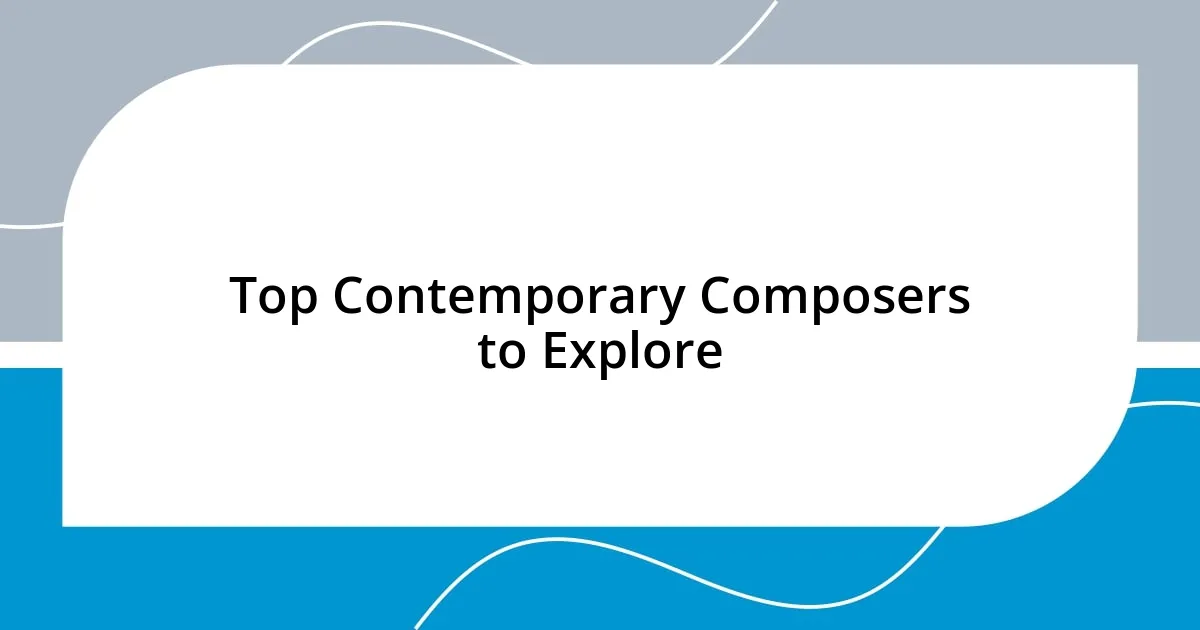
Top Contemporary Composers to Explore
When diving into contemporary piano music, it’s essential to discover the composers leading this vibrant movement. If you’re looking for fresh sounds and emotive storytelling through the piano, I can personally recommend a few standout figures. Exploring their works has deeply enriched my understanding of music, and I believe they’ll resonate with you too.
-
Philip Glass: Known for his minimalist style, Glass’s repetitive structures create an entrancing quality that pulls you in. I still remember the first time I played “Opening” from Glassworks; the steady pulse felt almost meditative.
-
Ludovico Einaudi: His compositions beautifully blend classical elements with modern sensibilities. Listening to Divenire transports me to a place filled with nostalgia—it’s like reliving cherished moments.
-
Tōru Takemitsu: A master of combining Eastern and Western musical traditions, Takemitsu’s works often evoke nature’s beauty. Playing his piece “Rain Tree Sketch” made me feel like I was part of a tranquil scene, lost in a gentle downpour.
-
Caroline Shaw: As one of the youngest Pulitzer Prize winners, her innovative approach is captivating. I was fascinated by her piece “Glaring,” which fuses classical techniques with contemporary styles, creating an extraordinary experience.
Each composer brings a unique perspective, creating a rich tapestry of modern piano music that speaks to the heart and mind.
Exploring contemporary composers opens up a world of diverse sounds and emotions. I find that engaging with these artists encourages me to experiment with my own playing. Each piece is an invitation to express feelings through the piano in a way that feels authentic and personal.
-
Anna Clyne: Her piece “Within Her Arms” stands out for its emotional weight; it beautifully captures the feeling of longing. I couldn’t help but feel my heartstrings tugged when I first encountered it.
-
Eric Whitacre: While primarily known for his choral works, Whitacre’s piano pieces are equally enchanting. I once played “Cloudburst,” and the atmospheric sounds transported me to a serene sky just before a storm.
-
Yuja Wang: Though primarily a performer, her compositions embody contemporary flair. One of her performances left me in awe, as the way she interpreted the pieces felt like a powerful emotional journey.
Delving into their music inspires me to think outside the box, embracing the vast possibilities that contemporary piano offers. If you haven’t explored these composers yet, I encourage you to dive in!
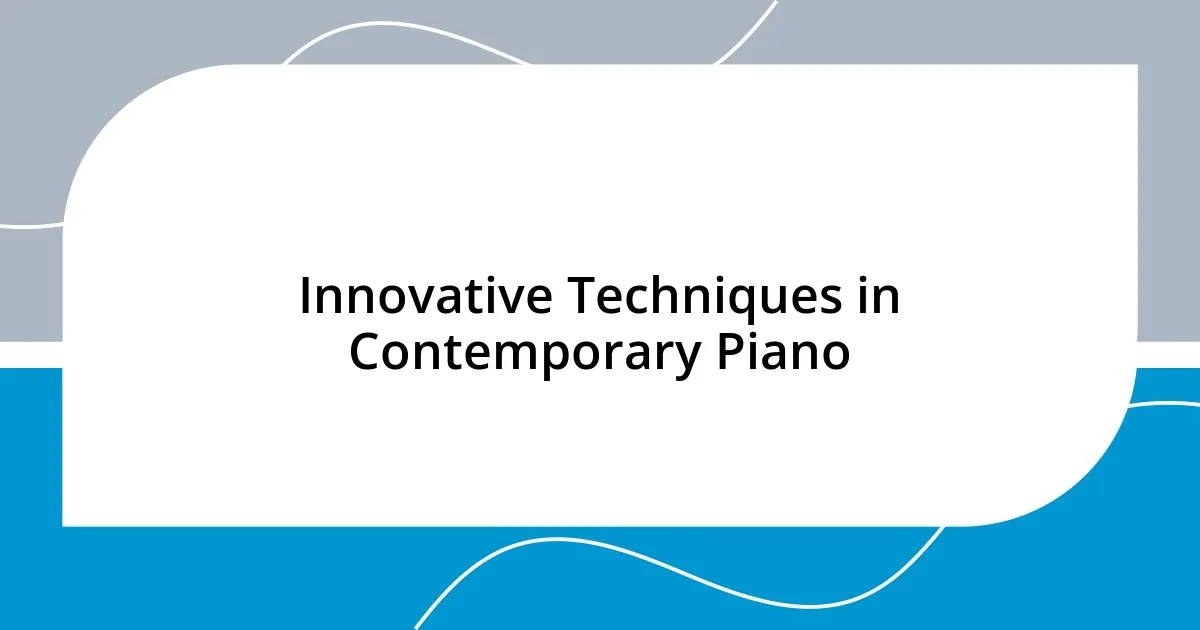
Innovative Techniques in Contemporary Piano
Contemporary piano compositions often utilize innovative techniques that push the instrument’s capabilities. One of the most captivating methods I’ve encountered is playing inside the piano. When I first tried it, plucking and strumming the strings, I felt like I was discovering hidden treasures. The sounds that emerged were ethereal and enchanting, offering a new dimension to my performances that made listeners lean in with curiosity.
Exploring unconventional dynamics is another exciting aspect of contemporary piano. I once attended a masterclass where the pianist alternated between soft whispers and thunderous crashes. The contrast was mesmerizing, drawing the audience into a musical narrative that felt profoundly personal. Isn’t it fascinating how volume and intensity can evoke such a range of emotions? I’ve found that mastering this approach not only adds depth to my playing but also invites the audience into an intimate experience.
I’ve also noticed how contemporary composers often incorporate non-traditional notations and instruction in their scores. Playing pieces with graphics or even colors was initially intimidating, but it has become one of my favorite ways to express creativity. When I first tackled a piece that had more visual cues than standard notes, I felt liberated. Each performance became a unique interpretation, allowing my emotions to dictate the music. It’s a refreshing reminder that there are no strict rules in contemporary music—only the freedom to explore and innovate.
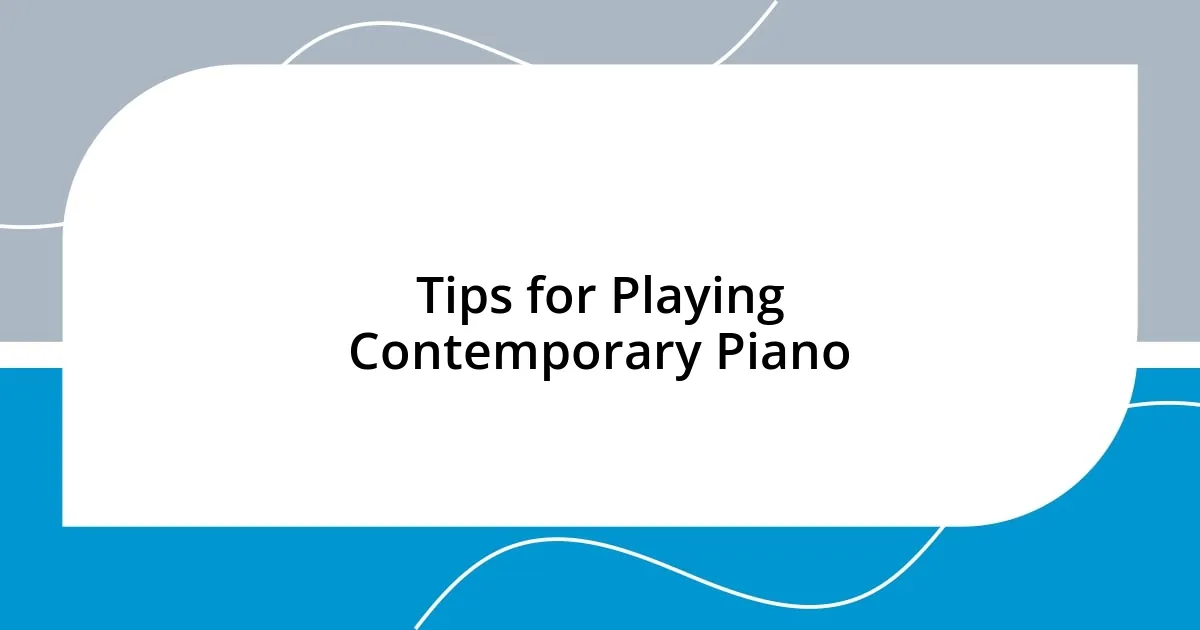
Tips for Playing Contemporary Piano
When playing contemporary piano, experimentation is key. For instance, I remember when I decided to incorporate extended techniques into my practice. Instead of sticking only to traditional playing, I began to explore using my elbows or forearms on the keys. The richer, more complex sounds that emerged opened my eyes to a world of sonic possibilities. Have you ever tried something different in your playing?
Listening actively to contemporary music is equally important. I often find that immersing myself in a diverse range of styles inspires my own interpretations. One time, I listened to Einaudi’s Islands while practicing, and it sparked a wave of creativity. I began to improvise on themes that resonated with me, and I felt deeply connected to the music. Engaging with the works of contemporary composers can fuel your passion and push your boundaries.
Lastly, focusing on the emotional narrative of each piece can drastically transform your performance. I recall a moment during a recital when I played Clyne’s “Within Her Arms.” I was nervous but chose to visualize the emotional weight of the piece. As I played, I allowed the feelings of nostalgia and longing to wash over me, which ultimately connected me to the audience on a profound level. Isn’t it astonishing how conveying emotion can turn a simple performance into a heartfelt experience? I believe this connection is what truly makes contemporary piano music powerful.
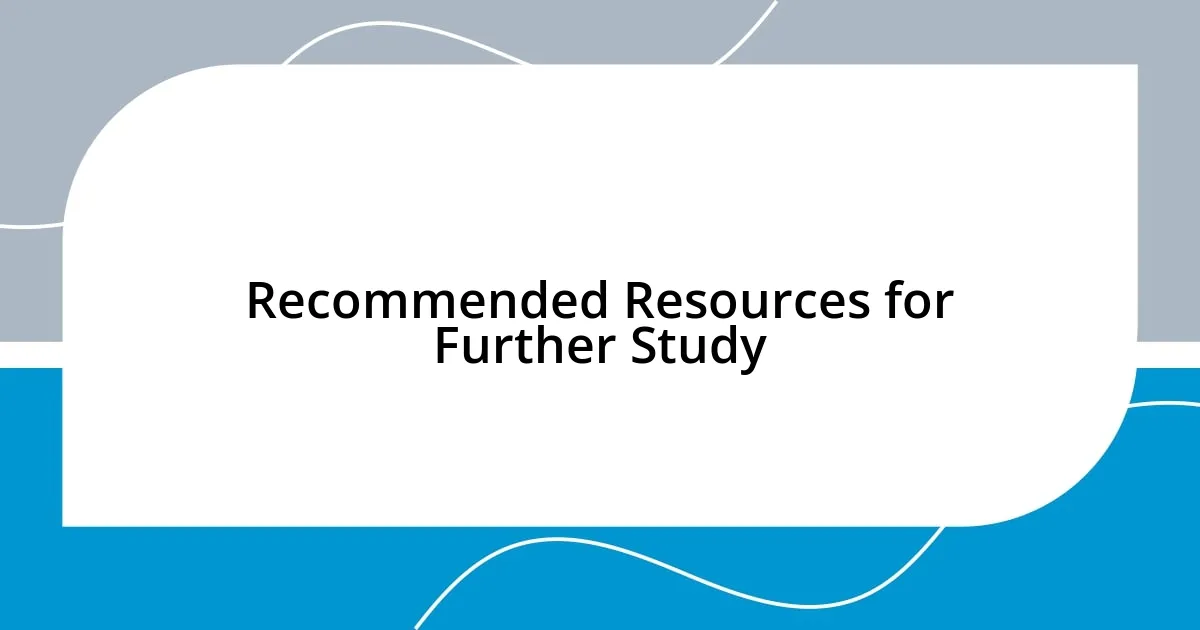
Recommended Resources for Further Study
To deepen your understanding of contemporary piano works, I highly recommend exploring resources like New Music USA and Performance Today. These platforms showcase a wealth of contemporary compositions and artist interviews that can inspire your own practice. I remember stumbling upon an interview with a lesser-known composer that completely shifted my perspective on writing for piano. Have you ever found that unexpected source that ignites a creative spark?
Books like The Music of John Adams or The Messiaen Companion provide not just analysis but also context, helping to elucidate the unique styles of these influential composers. While studying Messiaen, I discovered how his faith deeply informed his work, which provided a profound emotional layer that I hadn’t appreciated before. Have you ever delved into a composer’s background and felt a deeper connection to their pieces?
For those interested in hands-on learning, online courses such as those offered by Coursera or MasterClass can be invaluable. I took a course on contemporary improvisation that completely transformed my approach to playing. The live feedback from instructors was eye-opening, making me realize the power of spontaneity in performance. What resources have you found that pushed your boundaries as a pianist?

